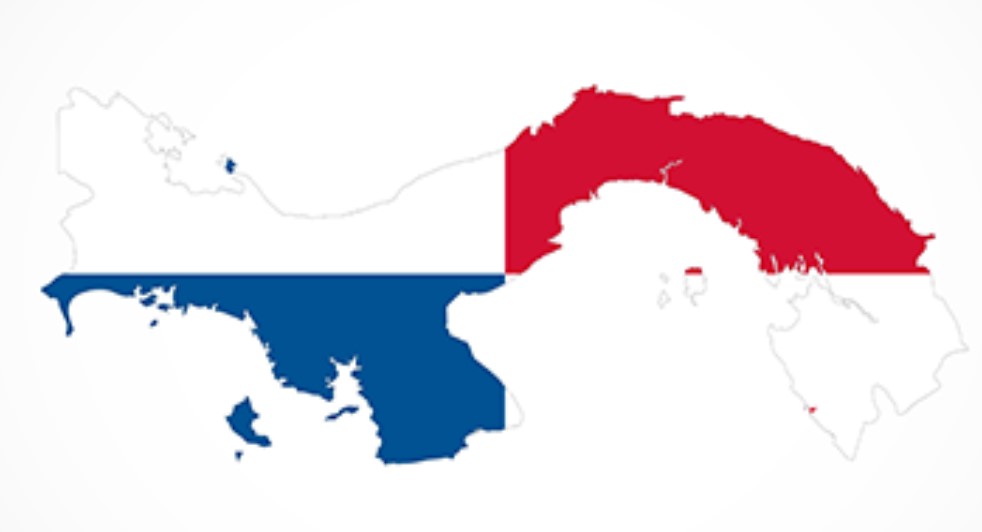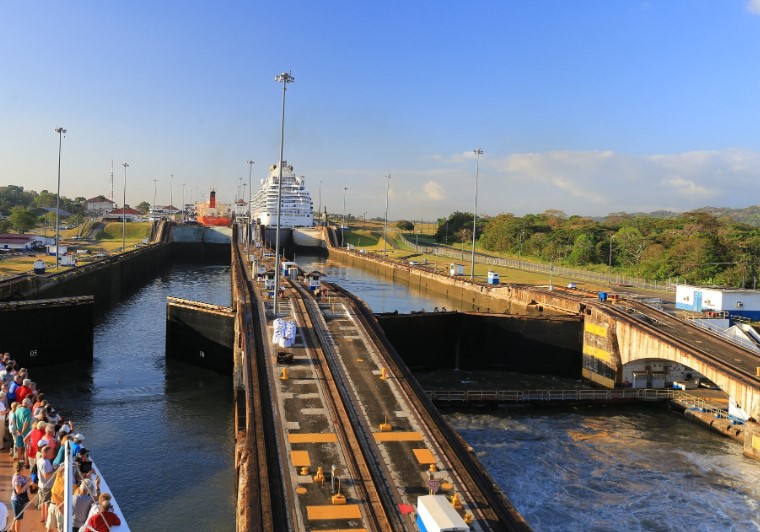
Panama is a small nation (about 3.8 million people) that occupies the narrow stretch of land that connects North and South America. It also embraces around 1,600 islands off its Atlantic and Pacific coasts.
The nation runs about 770km long and between 60 and 180km wide. The famous canal cuts the nation in two at a width of 82km, with an average depth of 13m.
The Panama Railway
Fifty years prior to the building of the Panama Canal, the Panama railway operated, between the cities of Colon and Panama. The Spanish created the Camino Real (royal road), and later the Las Cruces trail to transport cargo and passengers across Panama. This provided a vital link between the coasts. These remained the main routes across for more than three centuries. By the 19th century rail travel had developed and it was time to design a cheaper, safer, and faster alternative. The Panama railway became the main shortcut for people making their way to California for the gold rush.


The Panama Canal
In 1881, the French started building the canal, but progress halted due to engineering problems and high worker mortality (Over 20,000 workers died during French building efforts). The US took it over in 1904 and completed the project with newly available technology ten years later (at least another 5000 died).
The canal is 82 kilometers (51 miles) long and has been providing a shipping shortcut for over a century. It takes about 8 hours to cross which saves days if a ship had to navigate down and around South America and back up the other side. This saves nearly 20,000 km.
In 1999, control passed back to Panama.

In the year it opened (1914), about 1000 ships used the canal.
Today, nearly 15,000 ships pass through it annually. The ships currently use both lanes of the lock only to move in one direction at a time.
The one-millionth ship crossed the canal in 2010, 96 years after it opened.
The original canal locks are 33 meters wide 300 meters long and 12 meters deep. The locks, located on the Atlantic and the Pacific sides, lift and lower the vessels to/ from the Panama Canal which is situated 26 metres from sea level.
The term ‘Panamax‘ was invented to describe ships built to fit through the canal. This existed for a century until in 2016, a third, wider lane opened for larger commercial shipping, capable of handling ships nearly 3 times bigger.
Every ship that passes through the canal pays a toll based on its size, type and volume of cargo. Tolls are set by the Panama Canal Authority. Tolls for the largest cargo ships can run about $450,000. Cruise ships pay by berths (number of passengers in beds). The per-berth fee set in 2016 was $138; a large cruise ship can pay hundreds of thousands of dollars to sail through the Canal.
Colon
Oh my, initial impressions are not good. I have immediately gone to the Richard Pieper scale of civilisation as this place is the lowest that we have been on this scale since leaving India over a decade ago. The scale (of my invention) measures the nature of a city or region against a range of categories that include:
- Smell (typically sewage but often just rotting trash on the sides of the road and the sulphur smell that comes from rotting biological matter in waterways.
- Open drains (usually only becomes an issue when the place is filthy)
- Rubbish – this was everywhere and we watched people throwing trash straight on the ground in front of us
- Footpaths
- Stray dogs
Well quite frankly, Colon only passed one level of this test, it did have reasonably functional footpaths. As for everything else that we saw, this place was a filthy disgusting, smelly, living slum. It was so bad in fact that the local bin chickens were actually vultures.





Colón is a city of around a quarter of a million people that is the seaport on the Atlantic entrance to the Panama Canal. It is the capital of the province and was founded in the 1850 as the Atlantic terminal of the Panama Railroad (then under construction to meet the demand during the California Gold Rush).







Much of the city was destroyed in the Colombian Civil War of 1885 and again during a massive fire in 1915. As town was such a fizzer the only really interesting thing to do is to take a cab (30 mins) over to the entry to the Panama Canal.

The Gatun Locks are the old of locks taking you into the Gatun Lake. The older lock and narrower canal has a bit more character than the newer Agua Clara Locks.
If you are particularly keen you can keep going out to Fort San Lorenzo, the ruins of a 15th to 17th century fort. We did not as our time in port was tight and we had wasted it walking through the slums.

Traditional Tribes
The three largest indigenous groups in Panama are the Kunas, Emberás, and Ngöbe-Buglés all of which still live in the remote areas of the country. They have their own dialects, languages, and customs and most of them also speak Spanish. The national traditional dress for women is a long, full white cotton dress decorated with colourful embroidery called a pollera. Men wear a traditional montuno, which is a white cotton shirt with embroidery and short pants.



Fun Facts
- The inventor of “MURPHY’S LAW“, – anything that can go wrong will go wrong – was Edward Murphy Jr. who was born in Panama.
- The lowest toll ever paid was 36 cents, by American Richard Halliburton who swam across the canal in 1928.
- Panama has more bird species that the entire continental USA.
- The Panama hat (toquilla straw hat) is actually from Ecuador.
Ok, I will go back to the adage of the difference between the Atlantic and Pacific Coasts here in Central America. The Costa Rican example was a bit similar but this place was very poor. Perhaps the Pacific coast and Panama City would have offered more. It may be worth going through the canal on a ship, and Panama City may have more on offer, but Colon lives up to its name and may well be the arsehole of the world.